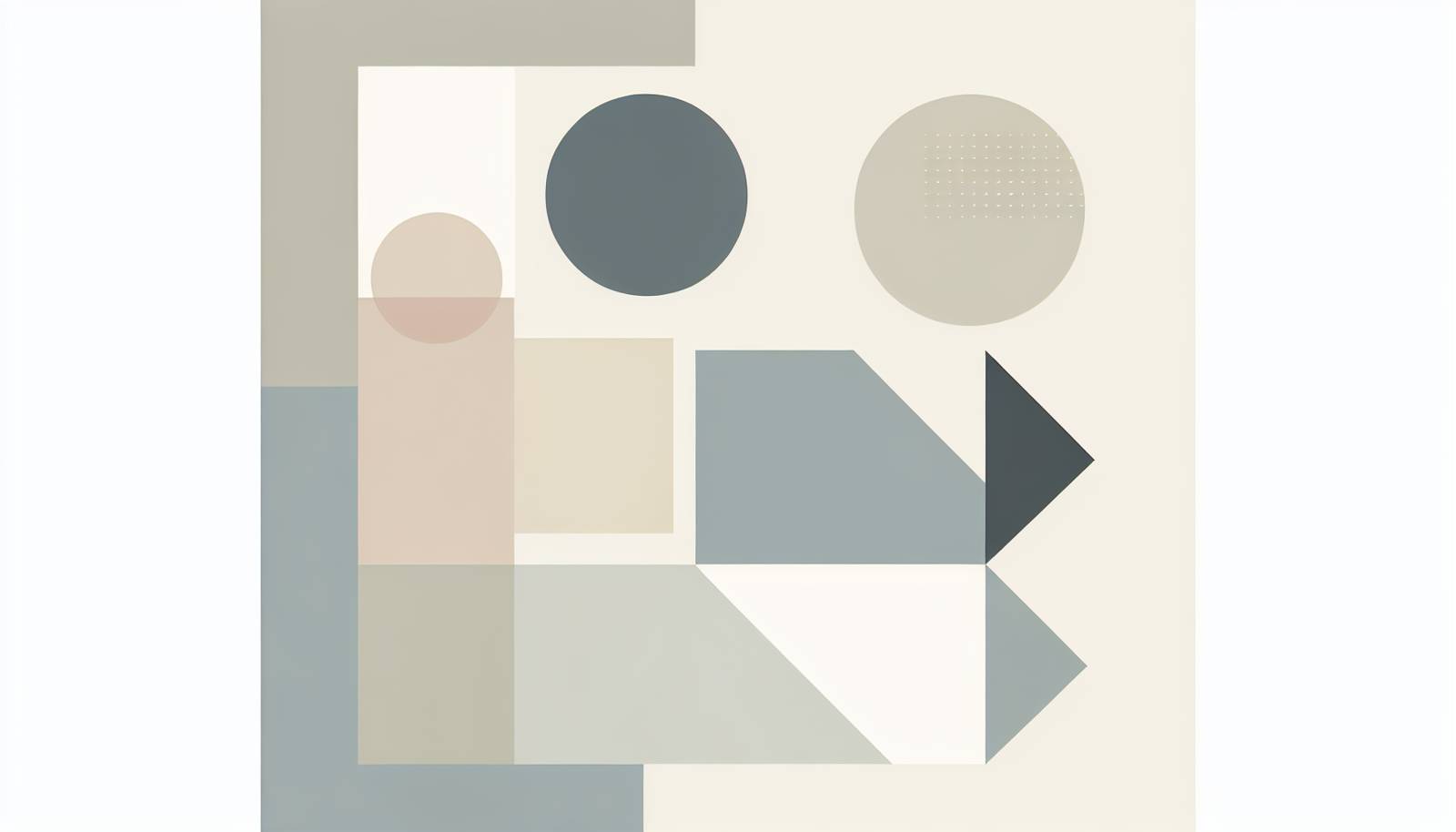
FAQ About The Influence of Minimalism in Graphic Design

What is minimalism in graphic design?
Minimalism in graphic design is an art style and aesthetic that focuses on simplicity and removing unnecessary elements. It emphasizes the use of whitespace, clean lines, and a limited color palette to create a clear and direct visual message without any distractions.

How did minimalism influence digital interfaces?
Minimalism has significantly influenced digital interfaces by promoting clarity and ease of use. The reduction of visual clutter allows users to focus on key functionalities, improving user experience. This approach has been adopted widely in web and mobile interface design, leading to more user-friendly and intuitive applications.

What are the key elements of minimalist graphic design?
The key elements of minimalist graphic design include the use of whitespace, simple forms, limited color schemes, and clean typography. These elements help in creating an uncluttered design that communicates the intended message clearly and effectively.

Why is whitespace important in minimalist design?
Whitespace, or negative space, is crucial in minimalist design because it helps to define and separate different elements within a composition. It enhances readability and directs the viewer's attention to the most important parts of the design. Whitespace also contributes to a clean and aesthetically pleasing look.

How does minimalism enhance visual communication?
Minimalism enhances visual communication by stripping away unnecessary details, allowing the core message to stand out. This clarity makes it easier for viewers to understand and retain the information being conveyed, making the communication more effective.

Can minimalism be applied to all types of graphic design projects?
While minimalism can be applied to a wide variety of graphic design projects, it may not be suitable for all. Its effectiveness depends on the project's goals, target audience, and context. For instance, some projects may require more ornate or complex designs to convey a certain message or feeling.

What are some common misconceptions about minimalism in graphic design?
A common misconception is that minimalism is equivalent to boring or simple design. In reality, minimalism requires skillful use of design elements to create a clear, powerful visual message. Another misconception is that minimalism lacks creativity; however, it often demands creative solutions to convey messages with fewer elements.

What are the benefits of using minimalism in graphic design?
The benefits of using minimalism in graphic design include improved clarity, greater focus on key elements, and enhanced user experience. Minimalism helps to create aesthetically pleasing designs that are easy to navigate and understand, which can lead to increased engagement and conversion.

How has minimalism evolved within the graphic design industry?
Minimalism has evolved from being a niche style to a mainstream design approach. Originally influenced by modernist art movements, it has been adapted to suit digital design needs, becoming prevalent in web and app interfaces. Today's minimalism may incorporate subtle gradients, animations, and textures to add depth and interaction within the constraints of a minimalist framework.

What role does typography play in minimalist graphic design?
Typography plays a crucial role in minimalist graphic design as it often serves as a primary visual element. The choice of typeface, size, and weight must be carefully considered to ensure legibility and to convey the desired tone. Typography in minimalism must complement the overall simplicity and clarity of the design.

How can color be effectively used in minimalist design?
In minimalist design, color is used sparingly to enhance the communication of ideas and to draw attention to specific elements. A limited color palette is often employed to maintain simplicity, but strategically placed colors can add emphasis and improve the overall aesthetic appeal.

Are there any famous examples of minimalist graphic design?
Yes, there are many famous examples of minimalist graphic design. Some iconic instances include Apple's product interfaces and advertising, the branding of companies like Google and Airbnb, and minimalist posters and artworks that rely on simplicity to communicate a powerful message.

What skills are essential for a graphic designer specializing in minimalism?
Essential skills for a graphic designer focusing on minimalism include a strong understanding of design principles, the ability to create visually appealing layouts with minimal elements, proficiency in typography, and a keen eye for color balance and harmony. Additionally, creativity and problem-solving skills are crucial to effectively communicate ideas using limited resources.

How does minimalism in graphic design relate to functionality?
In minimalist design, form and function are inseparable; every design element serves a purpose to support the overall message. By removing extraneous details, minimalism enhances the functionality of a design, making it more intuitive and easier for users to interact with.

What are the challenges of implementing minimalism in graphic design?
Challenges include avoiding oversimplification, which can lead to a lack of engagement or miscommunication. Additionally, designers must strike a balance between creativity and simplicity, making sure the design is visually interesting while remaining straightforward and clear.

Can minimalism coexist with other graphic design styles?
Yes, minimalism can coexist with other design styles, often blending elements to suit specific needs. For example, some designs may incorporate minimalist principles alongside more decorative or traditional elements to achieve a unique aesthetic that fulfills functional and aesthetic requirements.

What influence does minimalism have on consumer perception?
Minimalism often influences consumer perception by conveying a sense of sophistication, modernity, and clarity. Products and brands adopting minimalist design are frequently perceived as more user-friendly and trustworthy, which can enhance brand image and consumer satisfaction.

How important is layout in minimalist graphic design?
Layout is critical in minimalist graphic design because it organizes the visual elements in an intuitive and aesthetically pleasing way. A well-thought-out layout ensures that the focus remains on the key message and that the user's eye is naturally guided across the design.

What industries benefit most from minimalist graphic design?
Industries such as technology, fashion, and media often benefit from minimalist graphic design, as it aligns with the values of modernity and clarity that these sectors typically promote. Additionally, brands within these industries often seek to convey a forward-thinking, innovative image, which minimalism supports.

How does minimalism in graphic design affect accessibility?
Minimalism can positively affect accessibility by simplifying layouts and reducing the cognitive load on users, which makes interfaces easier to navigate for individuals with disabilities. However, it’s crucial to ensure that minimalist designs still adhere to accessibility standards, particularly in terms of text contrast and navigable elements.
